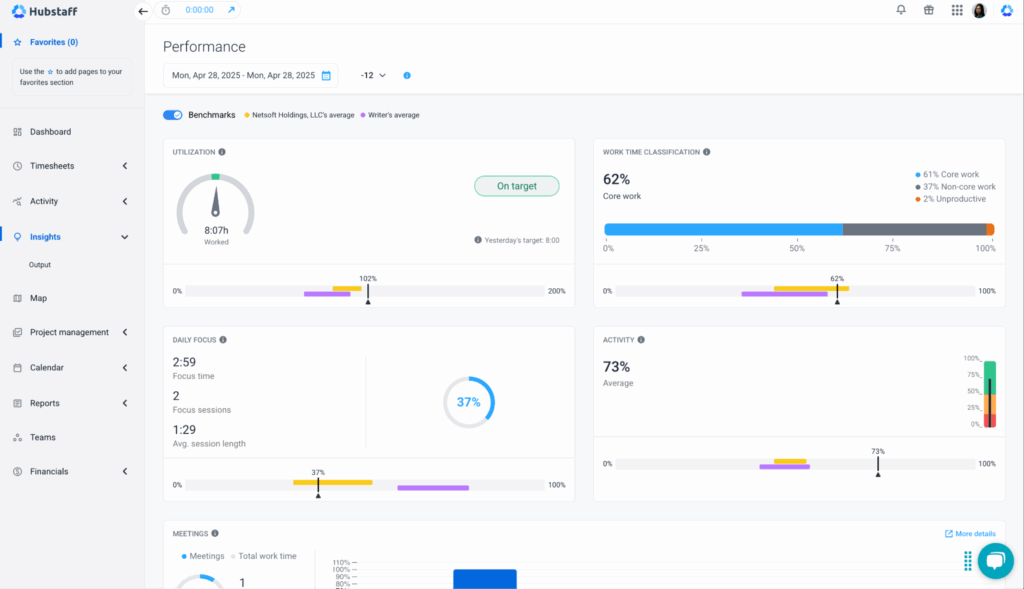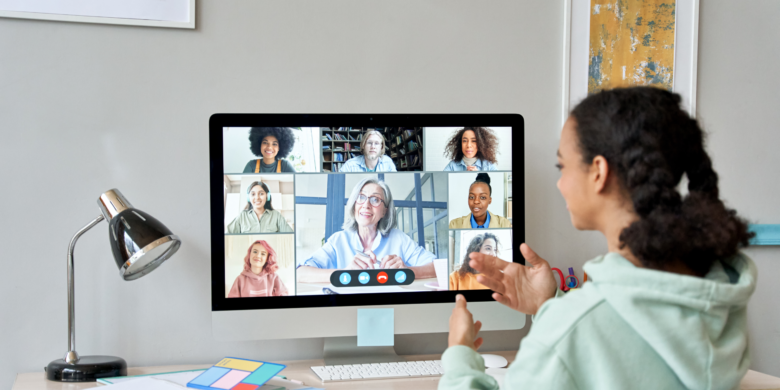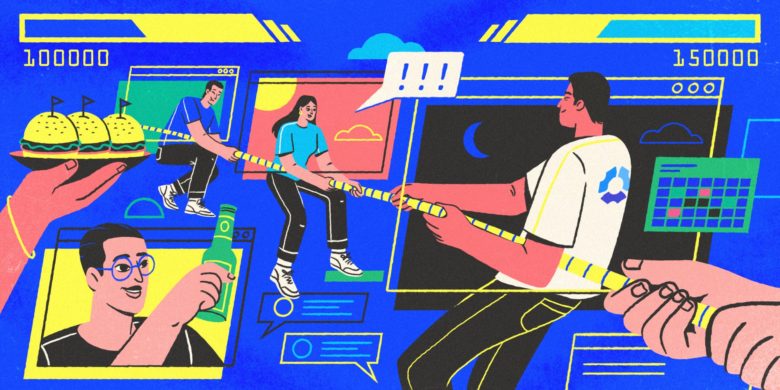Since the pandemic, remote work culture has been divisive. For some, it’s synonymous with improved work-life balance and efficiency, while others question the concept of work-from-home accountability.
Accountability in a remote work setting goes hand in hand with productivity. But how do managers ensure work-from-home accountability?
Are they getting things done on time? How are remote teams spending their work hours?
These are just some of the pressing questions that swirl around in the heads of a remote team manager. A work-from-home efficiency survey by Headway revealed that only 57% of remote professionals consistently start and finish their workday on schedule. But what remote work challenges could be causing this?
The answer could be a lack of communication, motivation, or accountability. To avoid such situations, you need the right strategies built on solid trust, clear communication, and expectations to boost accountability for remote teams.
Stay in the loop
Subscribe to our blog for the latest remote work insights and productivity tips.
The accountability gap in remote work is bigger than you think
A work-from-home accountability gap may arise in a remote work setting due to several factors like:
- No physical presence
- Limited face-to-face communication
- Lack of clear expectations
But most companies nowadays get accountability wrong. Productivity isn’t the issue with remote teams. The real problem is rigid rules, lack of transparency, and poor workforce management techniques.
The Hubstaff Workstyle Revolution report shows that 85% of leaders agree that remote teams are just as productive when appropriately managed. Instead of micromanagement, constant Slack check-ins, or emails, focus on building connection, trust, and transparency with your remote workforce. A human connection goes a long way.
Incorporate the right remote work accountability tools, like the Hubstaff employee productivity tracker, which mutually benefits employers and employees by providing productivity metrics based on hours worked.

As a remote team manager or leader, you must continue learning how to keep your team productive and hold employees accountable.
Now, let’s get the basics straight before we dive deeper into the work-from-home accountability strategies.
What is work-from-home accountability?
Work-from-home accountability is how employees stay dedicated to their responsibilities in a remote setting. Whether meeting deadlines, taking ownership of tasks, or maintaining quality standards and compliance.
Some examples of remote team accountability in the workplace might include:
- Take ownership of a project from start to finish
- Learn to troubleshoot fundamental technical issues
- Communicate clearly when the workload is too high
Common mistakes leaders make in the name of accountability:
The first mistake many leaders make in holding their remote team accountable is failing to create an actionable framework for said accountability. Managing a remote team without clear productivity tools and systems is like steering a ship through the fog without a compass — you might keep everyone moving, but no one knows where they’re headed.
Without direction, even the most well-intentioned efforts can drift off course. Here’s where leaders are getting it wrong:
- Micromanaging over trusting remote teams
- Failing to define clear expectations, responsibilities, and success metrics
- Not using tools to keep productivity in check (and instead turning to micromanagement)
- Failing to understand individual work styles
- Lack of positive affirmations (not celebrating wins, progress)
- Tracking employee activities without consent and transparency
How are employees being affected by the wrong accountability approaches?
The wrong approaches to accountability don’t just keep your team from reaching their full potential. They can also harm your entire team due to productivity through issues like:
- Increased burnout. Requiring individuals to constantly “prove” they’re working remotely can lead to anxiety and burnout.
- Resentment. Monitoring employee activities without consent can damage trust and often results in resentment.
- Underperformance. Lack of clear expectations and clarity around work causes underperformance.
- Quiet quitting. Limited open communication in remote settings can result in disengagement and a lack of ownership over one’s work.
Why work-from-home accountability breaks down (and it’s not what you think)
We’ve all heard the surface-level arguments against remote work, from distractions, reduced visibility, and lack of communication. However, the real reasons accountability breaks down in remote settings run deeper and are often preventable.
In hindsight, burnout happens in a remote environment, too. Sometimes, an employee ends up working way more than 40 hours, or vice versa. Most remote accountability failures stem from poor feedback loops, vague expectations, and leadership defaulting to surveillance without context, clarity, or a system to interpret what they see.
Let’s explore the most pressing culprits, supported by data and practical insights.
1. Burnout hides in plain sight
One of the challenges of a remote working environment is that burnout often happens in hindsight. Many employees unintentionally overwork without clear boundaries. Conversely, others may struggle with underperformance due to a lack of structure, isolation, or motivation.
- According to Forbes, 69% of remote employees stated increased burnout from digital communication tools.

When there’s no structured routine, accountability suffers. Employees may seem “checked in” on the outside but are often mentally checked out. Managers usually miss these warning signs without visible cues. By the time they start seeing productivity drops or attrition spikes, it’s an uphill battle to correct the issue.
2. Feedback is a two-way street (not a dead end)
Feedback for remote workers is often slow rather than proactive; it happens mostly when something goes wrong. But in distributed settings, silence isn’t golden. It’s dangerous.
Employees who don’t receive regular feedback are more likely to feel invisible and disengaged. Leaders who fail to ask for feedback miss valuable information that could improve team dynamics, processes, and morale.
- Gallup research shows that 15 to 30-minute conversations around feedback have a greater impact than 30 to 60-minute conversations when they take place regularly.
3. Unclear expectations lead to invisible expectations
In an office, ambiguity can be solved with a quick chat over coffee in a conference room. In remote teams, unclear expectations are surely a productivity killer.
When employees don’t have clarity on what success looks like (or when and how work should be delivered), they’re left guessing. This leads to missed deadlines, inconsistent output, and fractured team alignment.
- A study by Asana found that employees spend 58% of their workdays on work about work, while managers spend 62% of their time here.
Strong remote accountability starts with crystal-clear expectations: documented goals, shared timelines, defined roles, and consistent follow-through.
4. Surveillance kills employee trust
Trying to solve accountability with employee monitoring software, tracking activities, logging screen time, or taking screenshots without transparency kills trust. Monitoring without context or consent breaks down trust, triggers anxiety, and often pushes top talent out the door.
- A report by ExpressVPN found that 59% of surveilled employees feel stress or anxiety because of being monitored.
Remote accountability with employee monitoring should allow individuals to thrive, not build work anxiety. Outcomes over optics. Autonomy over anxiety.
Accountability signals that high-performing remote teams share
Accountability occurs when you instill proper values and trust in your remote employees. It’s not something you can infuse in your teams overnight or accelerate through micromanagement.
It’s built through constant communication, trust, and support. As a remote team manager, you’re bound to fail if you constantly chase what your employees are doing instead of trusting them to do their jobs.
According to Gallop’s State of the Global Workplace report, manager engagement fell from 30% to 27% in 2024.
Therefore, lead with the strategy of engagement and observation. Remote work accountability tools can help you pinpoint performance issues or high productivity signals, but it doesn’t stop there.

Work-from-home accountability signals
When building a robust remote team, here are some accountability signals to bookmark:
Alignment with business goals. The first sign of a high-performing employee is that they clearly understand business goals and objectives. The better they know the company’s mission, vision, and values, the better they can deliver results.
Collaboration built on trust. Your team members trust each other to deliver effectively and on time while seamlessly collaborating. This then leads to a shared sense of responsibility and accountability.
Meeting productivity and efficiency. One of the most crucial signs of accountability for remote teams is constantly meeting project deadlines efficiently. If individuals deliver on expectations by being their best, most productive selves, they’re already on the path to success.
Learning to improve performance. A curious mind often explores new paths that lead to greater destinations. You have a winning team when your employees are eager to learn, develop new skills, and invest in improving their performance.
Motivated to achieve goals. Having highly motivated individuals ready to achieve their goals can help you build a robust remote workforce. Pay attention to highly engaged, purpose-driven individuals constantly working on improving outcomes.
Now that you clearly understand what a high-performing remote workforce could look like, you’ll be able to find and retain the right talent. These initial accountability signals will help you create a strong team that lasts for years to come.
Fixing the gap: What accountability-driven leadership looks like
Accountability starts with leaders who know how to bring the best out of employees in a remote setting, building transparency and accountability.
These individuals learn how to use the best remote work tools and strategies, such as setting SMART goals, OKRs, KPIs (Key Performance Indicators), and team collaboration practices. Here are some traits you might want to look for in your remote leadership teams:
They lead with clarity, not control
The difference between clarity and control is that the former boosts collaboration while the latter diminishes it. Strong leaders provide a clear roadmap to accomplishing a business goal by defining clear, shared expectations, outcomes, project timelines, and task ownership.
Bonus tip: Setting OKRs (Objectives and Key Results) can help leaders establish a structured framework. OKRs help align employee and team performance with broader business goals to provide better clarity for your team. With Hubstaff’s employee time tracking and project management features, you can align OKRs with business goals.

For instance, try metrics like work time classification. It breaks down core work (time on high-impact work) and focus time (uninterrupted work sessions lasting over 30 minutes), two useful metrics for setting and tracking benchmark data for productivity improvement. It’s also great for cutting down on unnecessary team meetings.
2. They create constructive, safe feedback loops
Authentic leadership could involve offering constructive feedback that fuels growth, builds morale, and helps individuals improve at their jobs. Think async check-ins, retros, or lightweight debriefs. Make it a regular process with one-on-one discussions of projects and upcoming tasks, and offer help to make individuals feel safe and supported.
Bonus tip: Hubstaff’s time tracking and employee activity data can help you navigate the feedback process. Knowing how much time your team spends on a task and their activity levels makes it easy to identify where feedback is due. Use time or activity data from Hubstaff as context (not judgment) for feedback conversations.
3. They track productivity, not presence
Good team leaders focus on outcomes, not who’s online and putting in excessive working hours. The point of remote work is flexibility. Therefore, leaders who concentrate on progress and results over work hours are already winning. What counts is the quality of work your team produces, not the hours they put in.
Bonus tip: Track team productivity backed by data with Hubstaff’s employee monitoring software. It integrates with more than 30 CRM, bookkeeping, and project management software and runs in the background so you can focus solely on your work. You’ll see the tasks your team is working on and the time it takes to get them done.
4. They are role models of accountability themselves
Accountable leaders are like true north stars for employees. When they’re responsible, it sets the tone and leads to success for all of your remote team members. This could be as simple as prioritizing changes, following through, and owning mistakes. Further, strong leadership takes accountability for the team they’re leading, not just themselves. If a team member is falling behind or needs help, true leaders lend a hand and see it as an opportunity to build support and connection.
Bonus tip: Adapt your culture to be more globalized by inviting feedback on communication norms, work hours, and more. Constantly stay attuned with the latest tips and strategies for remote managers to grow their leadership knowledge.
Remote work isn’t the problem, but your accountability model might be
Remote work isn’t the problem. However, even the most talented employees will feel the impact without a thoughtful, trust-based accountability system. Accountability can’t be achieved with surveillance. However, when your team is treated with trust and respect, they will perform better.
Whether implementing OKRs, building better feedback loops, or leveraging tools like Hubstaff to align productivity with purpose, you can turn accountability into your remote team’s biggest strength. The best-performing remote teams have leaders who focus on setting clear expectations, empowering individuals with autonomy, and creating a culture of transparency and ownership.
Most popular
The Complete Guide to User Activity Monitoring: Tools, Benefits, and Ethics
Have you ever noticed how the conversation around monitoring tends to swing between “track everything” and “trust everyone b...
How to Choose the Right Employee Attendance Tracker for Your Team
An employee attendance tracker records time spent on the job, absences, late or abandoned shifts, and other valuable information....
How Agencies Can Leverage AI & Time Tracking to Increase Profits
Why AI Is Powering Agencies, But It’s Missing From the Data Agencies are adopting AI faster than ever – using it for research,...
How to Track Remote Employees Effectively in 2025
Remote work has become the default for many teams, and for good reason — it’s efficient, flexible, and often more productive t...


![The Pandemic’s Impact on Remote Work & Where We Go From Here [Report]](https://hubstaff.com/blog/wp-content/uploads/2020/08/Work-from-home-after-covid@2x-780x391.jpg)

